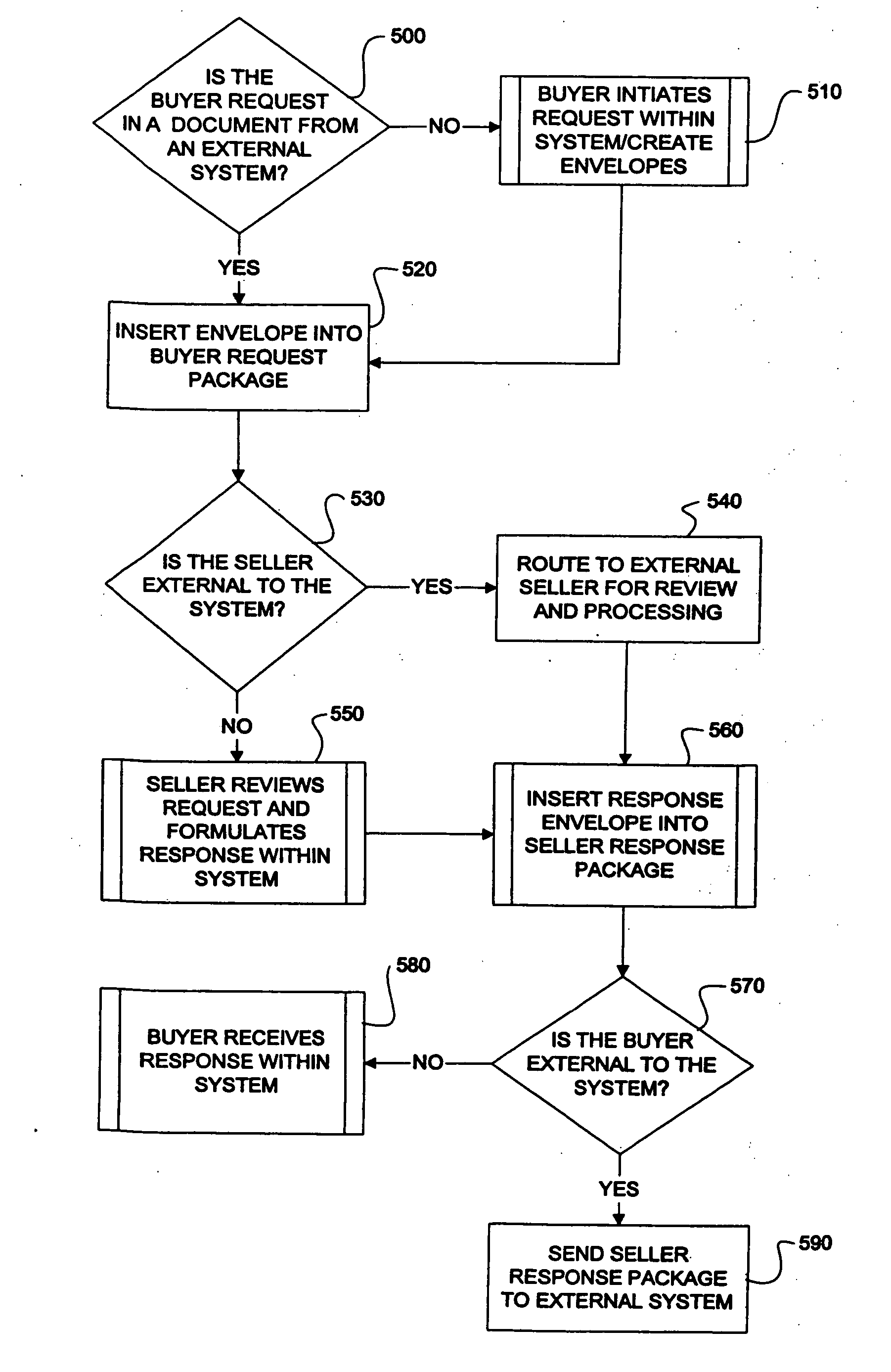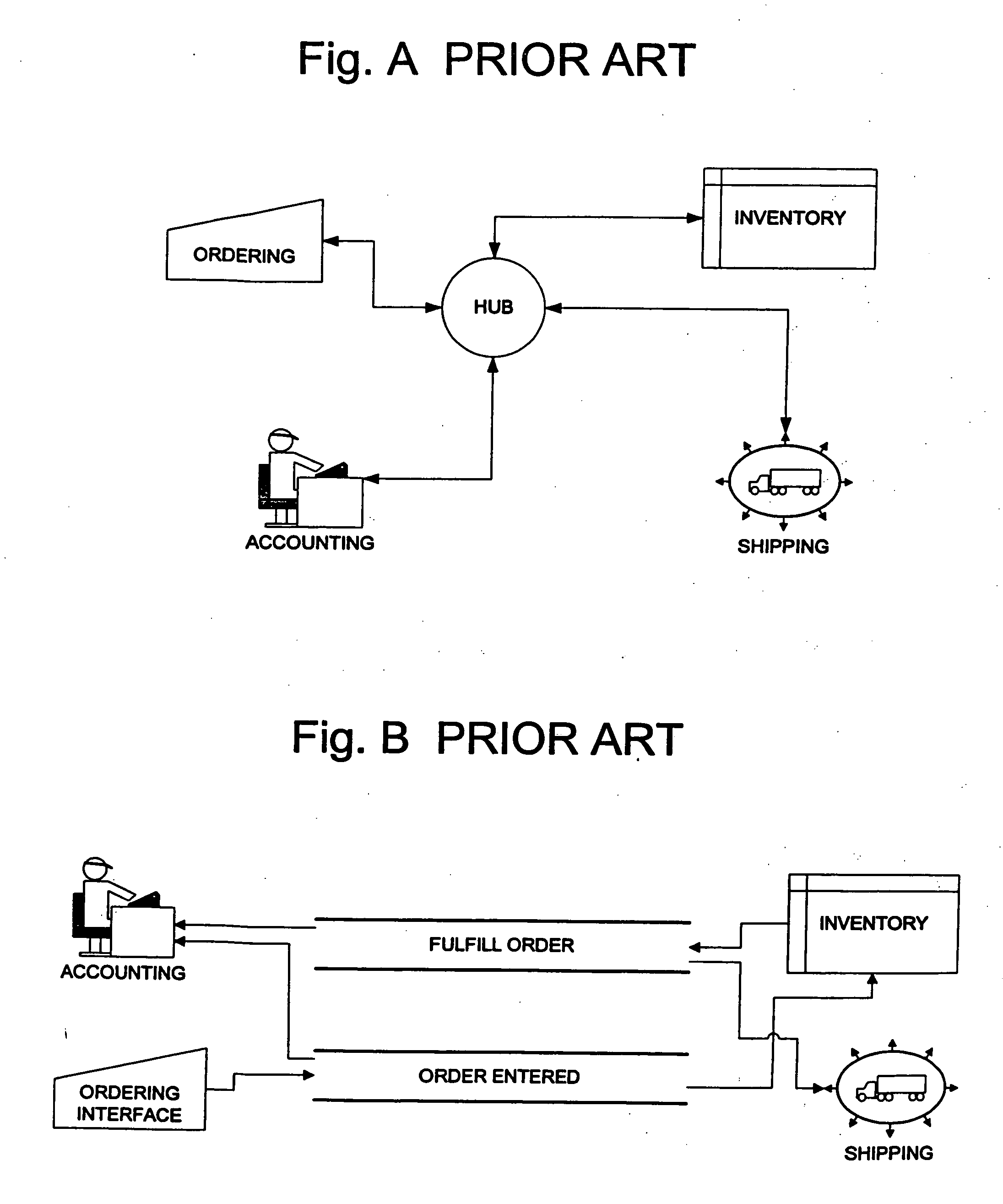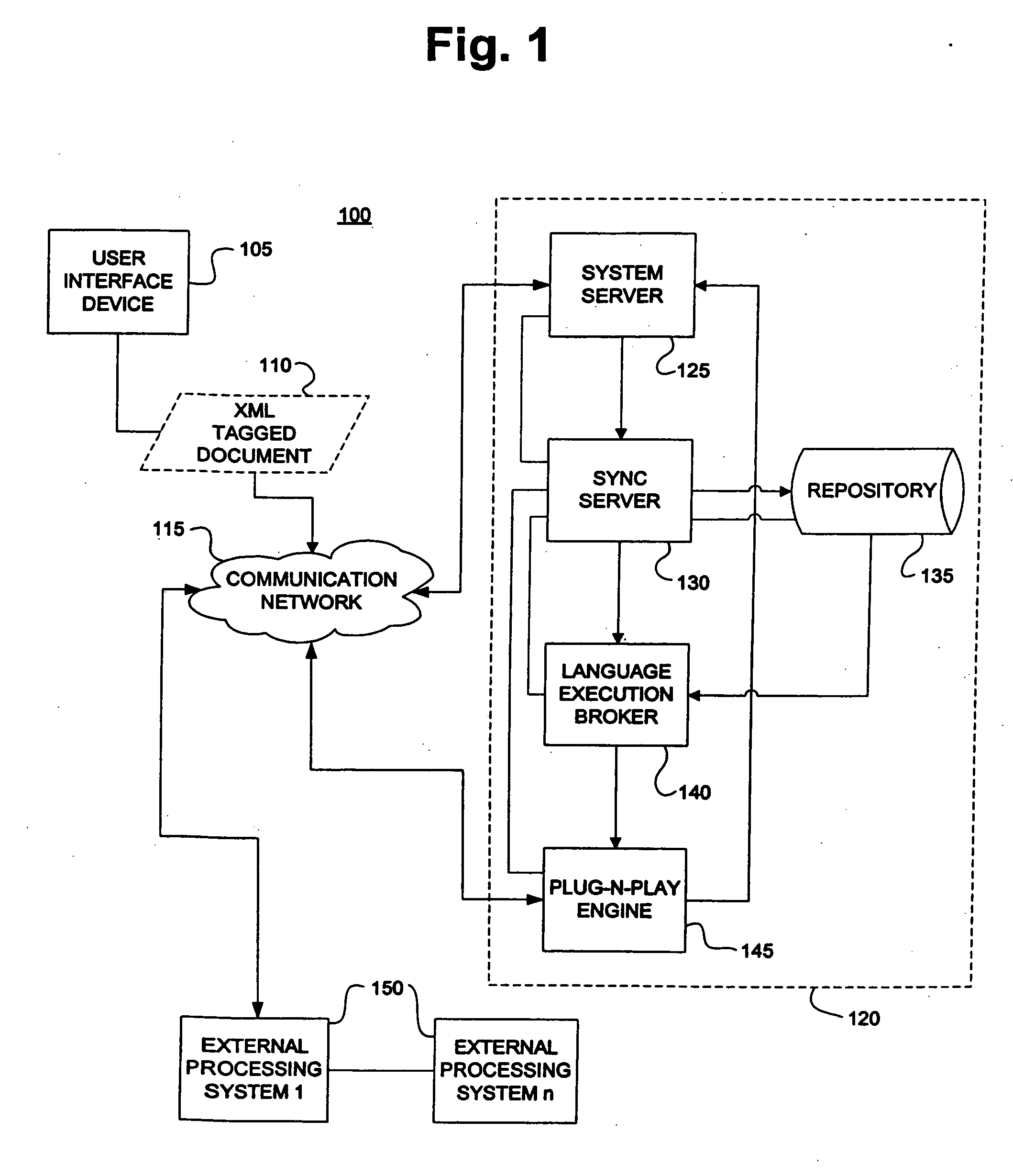[0009] Another prior art system is a channel-based
enterprise integration model as shown in prior art Figure B. An example using
business process systems integrating accounting, ordering, shipping, and inventory modules is again depicted. In a channel model, instead of a hub operating to serve as a focal point for the distribution of incoming information, different applications subscribe to one or more channels to monitor for or to publish an event. For example, an event might be an “order entered” published by the ordering application to this channel. All other applications with an interest in an “order entered” event would subscribe to monitor that particular channel. For example, an inventory application would subscribe to the “order entered” channel in order to check the inventory
database to ensure that the order entered is available in inventory. If the item ordered was available, the inventory application could publish to another channel called “fulfill order” to which a shipping application could be a subscriber. This can be a waste or significant resources in terms of processing power and bandwidth for communications. By creating specific channels for specific events, the channel model helps avoid the
bottleneck drawback of the hub and
spoke model. However, applications in the channel model must still maintain a constant connection with subscription channels to monitor for pertinent new information.
[0043] A response by a seller to a request by a buyer is normally prepared within the complex workflow platform 120 via inputs from the seller through an interface, block 440. The DTD dynamic processing system 100 appropriately tags response documents and inserts the envelopes created into a response
package made available to the buyer, block 460. 10 However, in the event the seller is external to the platform 120, the seller may still pass appropriately tagged documents to the platform 120, block 450, which will be recognized by the DTD dynamic processing system and inserted in to a response
package to be made available to the buyer, block 460. Again, normally the buyer would be notified that a response to a request is available and review the response as processed by the DTD dynamic processing system 100 within the platform 120 through a
user interface, block 470. However, in the event the buyer is external to the complex workflow platform 120, the response
package may merely be routed to the buyer's external system for processing and review by the buyer system In this way, through the use of the tagged documents in communication envelopes, the workflow processes of the platform 120 are made accessible to a greater body of users. This may be desirable for users who, for example, would rather use their own, perhaps proprietary, processing systems to analyze the data and documents, but still want the opportunity to interface with other users through the complex workflow platform 120.
[0053] Additionally, a system is needed which reduces the amount of time necessary to plan complex projects. In the oil and
gas industry, for example, engineers often spend considerable time researching well files when planning to conduct operations on existing wells and / or developing new wells. For example, when planning a new well, an engineer will often research well files of “offset” wells to determine the costs, time to perform, and the hazards experienced during operations. This information is commonly accessed via paper or electronic files without any expert systems assistance. The information accessed is then used to plan a new well in hopes of minimizing the risks associated with the new well. Such information is then commonly only accessible by researching an existing well's file and does not provide readily accessible information on similarly situated projects. Thus, a need exists for a
knowledge management system which enables users to research, identify and utilize information from like projects and not just from those projects with which they already know about or have to conduct an extensive search in or to so identify.
[0058] In an oil and gas embodiment, the present invention enables Engineers and Managers to extract, utilize and present such information pertaining to the exploration, discovery, development and exploitation of oil and gas resources. In one embodiment, such information is provided in a
usable format so that timely and intelligent decisions can be made which have a positive influence upon the exploitation of natural resources and especially the development and / or
operational performance of current and future wells. In one example, a robust, secure, centralized, web-based
database and infrastructure may be provided and can be accessed from anywhere at anytime.
[0060] It is to be appreciated that various types of information may be suitably received by the system including, for example,
work flow information collected by the Wellogix® system navigator on its navigator / Dynamaps™ function, operational data stores (for example, information provided by
Landmark Graphics Drilling
Information Management System (DIMS) application), and back-office financial systems (for example, SAP via Vitria's™
enterprise integration capabilities). Such information may be provided in an Extendible Markup Language (
XML) format such as WellXML™ format or suitably converted into such format. WellXML™ is a subset of XML which is tailored for the oil and
gas industry, and provides a flexible and comprehensive
interfacing scheme for data structures used to facilitate the transfer of information associated with complex
engineering services, drilling related functions between homogeneous and heterogeneous application systems.
 Login to View More
Login to View More  Login to View More
Login to View More 


